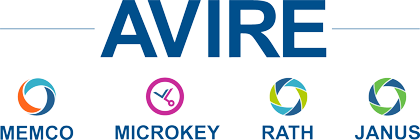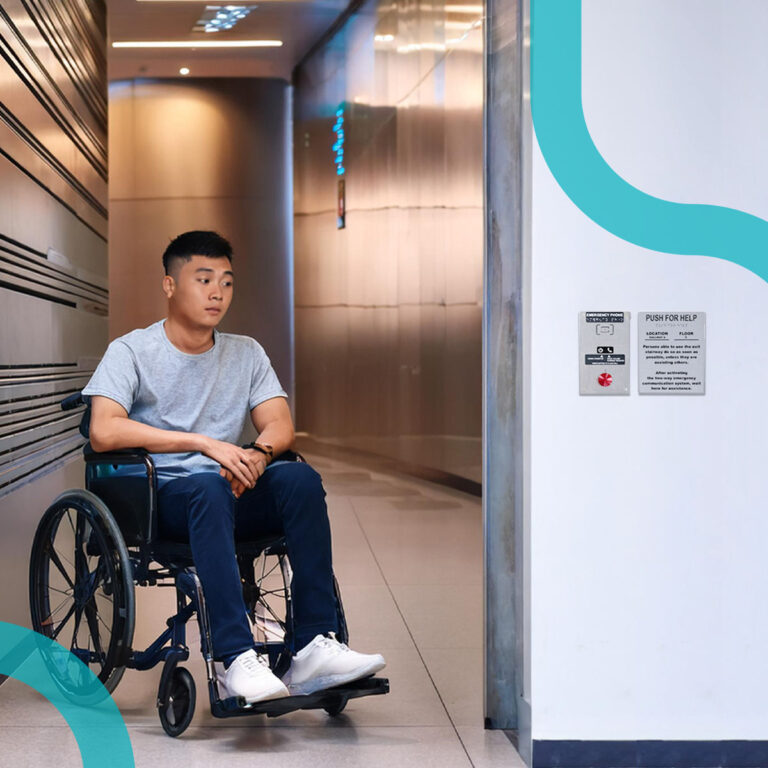Emergencies such as fires or being trapped in a building can pose significant dangers, particularly for individuals who have difficulty using stairs. This is where a two-way communication system for rescue assistance becomes crucial. These systems are installed in designated areas where people can call for help and safely wait for emergency responders to arrive.
Let’s break down what this is, why it’s important, and introduce you to the reliability and flexibility of the RATHTM by AVIRE systems.
What is a Two-Way Communication System for Rescue Assistance?
Two-way communication systems for rescue assistance are installed in designated areas in a building where people who can’t use stairs—like those in wheelchairs—can wait safely during an emergency. They are equipped with communication devices that connect directly with emergency personnel. When elevators are inaccessible during a fire, or other emergency, these safe areas become vital.


Why are Two-Way Communication Systems for Rescue Assistance Important?
When a fire breaks out, elevators cease to operate, and the sign instructs “In Case Of Fire, Do Not Use Elevator, Use Stairs.” But what if someone is unable to use the stairs? Not everyone is capable of walking down multiple flights of stairs to safety. Or the fire could be in the stairwell blocking evacuation. That’s why a two-way communication system for rescue assistance is so important. According to the International Building Code (IBC 1009.8 ), a two-way communication system shall be provided at the landing serving each elevator or bank of elevators on each accessible floor that is one or more stories above or below the level of exit discharge. Having these designated areas on every floor above or below the first level enables everyone to quickly assemble, access the communication system to call for help, and wait for rescue assistance.
Safety Regulations and Compliance
In the U.S., public buildings must have two-way communication systems for rescue assistance to meet safety codes from:
- NFPA (National Fire Protection Association) Establishes standards for fire safety.
- IBC (International Building Code) Lays out rules for building design, including emergency exits.
- ADA (Americans with Disabilities Act) Ensures that buildings are accessible to people with disabilities.
- UL 2525 Standard to test and certify that the electrical and functional operations of equipment meets the requirements of the safety standard, specifically addressing concerns of life safety. (Watch for more in-depth information on UL 2525 in a future blog).
As a whole, these safety regulations and compliance standards guarantee that life safety products and systems adhere to the highest standards, ensuring they are safe, secure, and sustainable.This assurance gives everyone peace of mind that in an emergency, the two-way communication system for rescue assistance will perform correctly.
Flexible and Reliable Two-way Communication Systems for Rescue Assistance from RATHTM by AVIRE
RATHTM by AVIRE makes the most trusted, reliable, and flexible two-way communication systems for rescue assistance. For example, our SmartCommand system offers an innovative design and is fully compliant to the newest code requirements. It is easy to install, offers effective, addressable programming, and features daisy-chained wiring for up to 128 call boxes. This wiring approach can drastically reduce both the amount of wire and the time needed for installation. Centralized programming provides a quick and efficient set up with text to speech annunciation for clear communication. The SmartCommand system reduces overall costs through an efficient installation process, using fewer materials, and is easier to maintain.
For any size building(s), RATHTM by AVIRE has you covered with systems that fit your needs, meet compliance, and keep everyone safe. Watch for future blog articles about our portfolio of two-way communication systems for rescue assistance.
Whether you’re working on a new construction project or renovating an existing building, it’s essential to understand the importance of two-way communication systems for rescue assistance and the necessary code compliance for the installation. With two-way communication systems for rescue assistance from RATHTM by AVIRE, you can feel confident your building will be in compliance, and everyone stays connected and safe when it matters most.

For more information about the full suite of offerings of two-way communication systems for rescue assistance,
or to get started on your project, contact RATHTM by AVIRE today.

